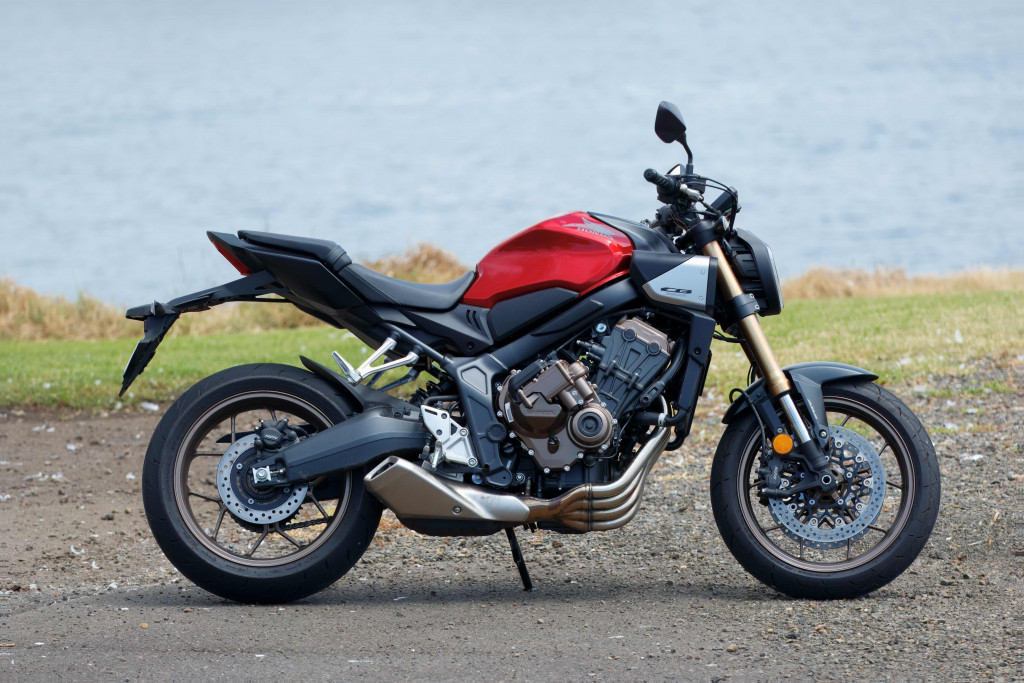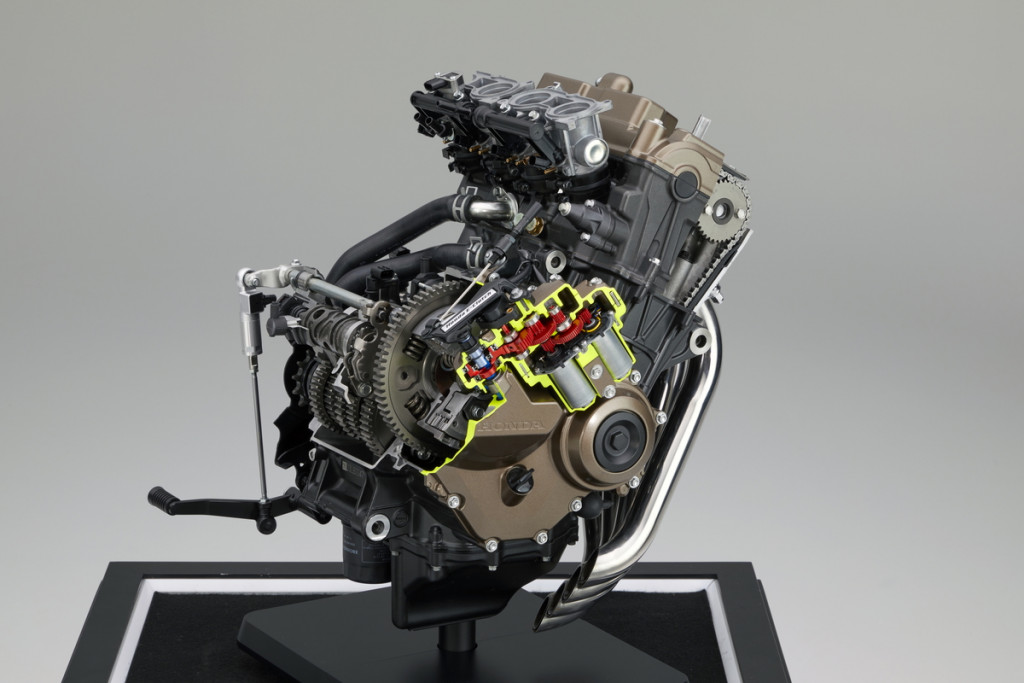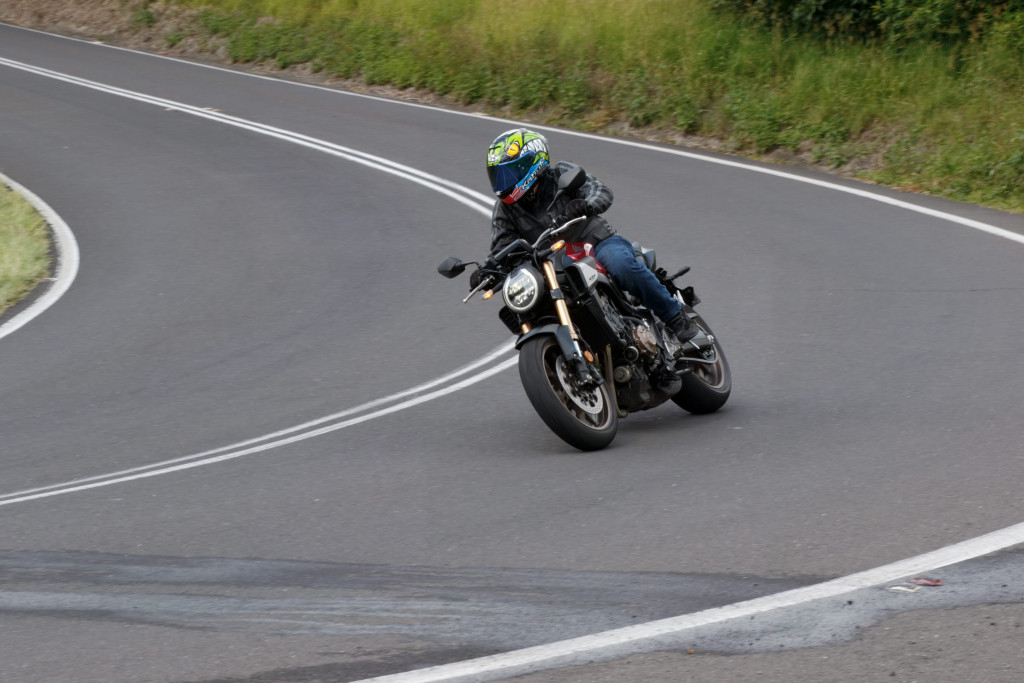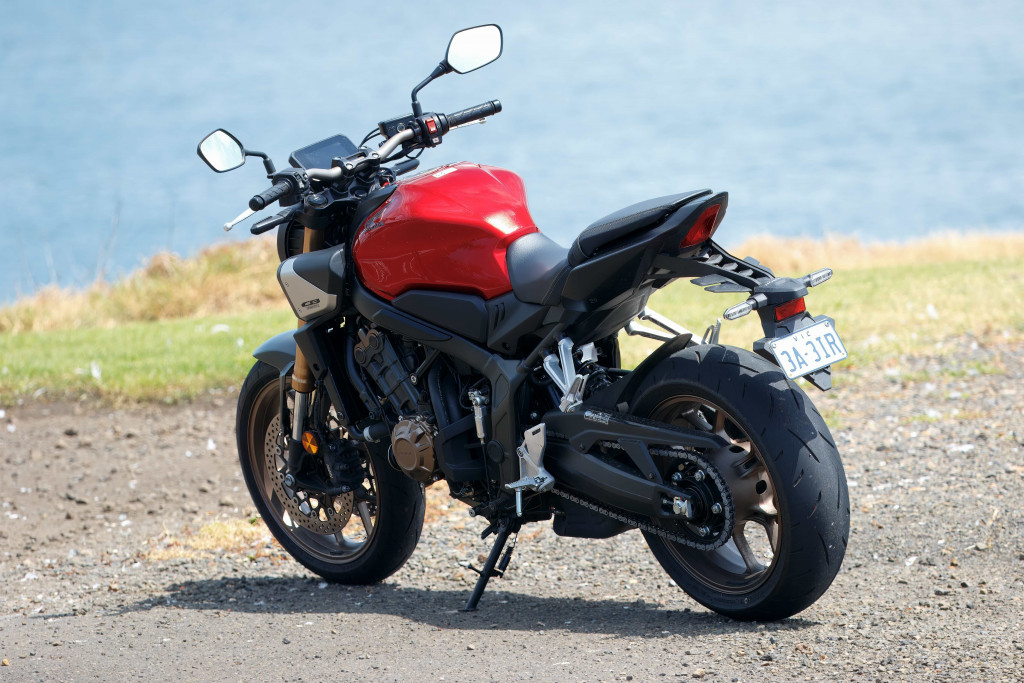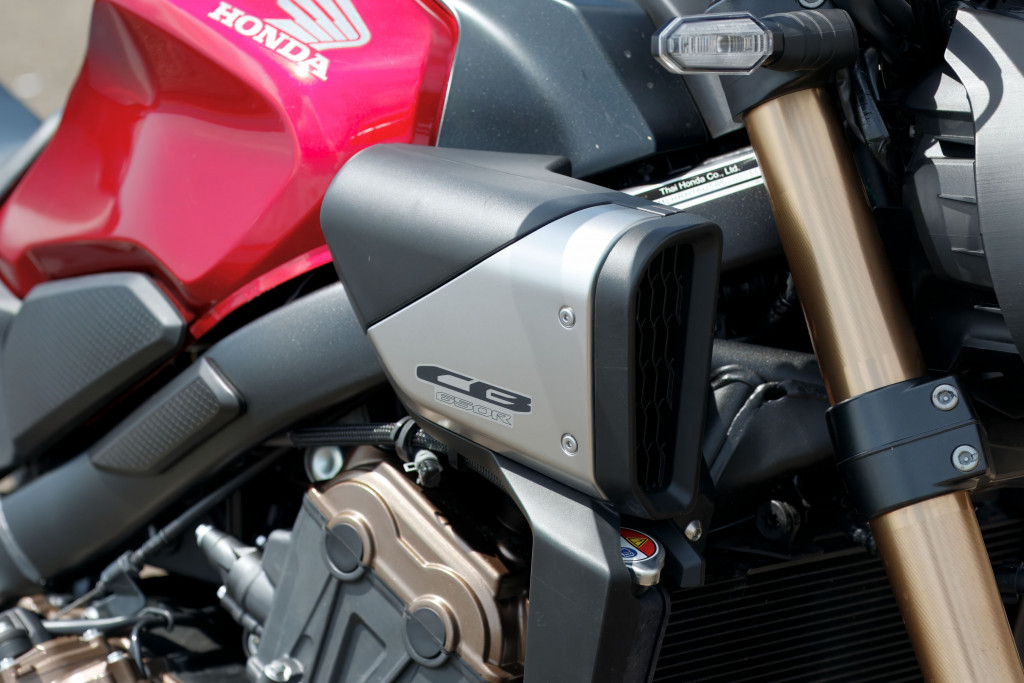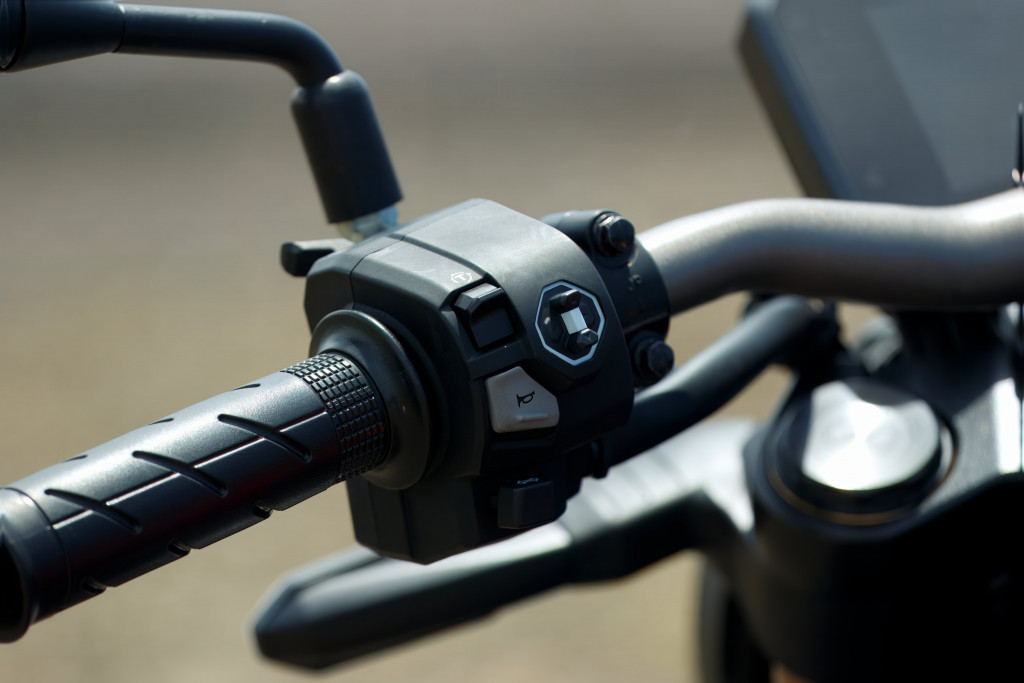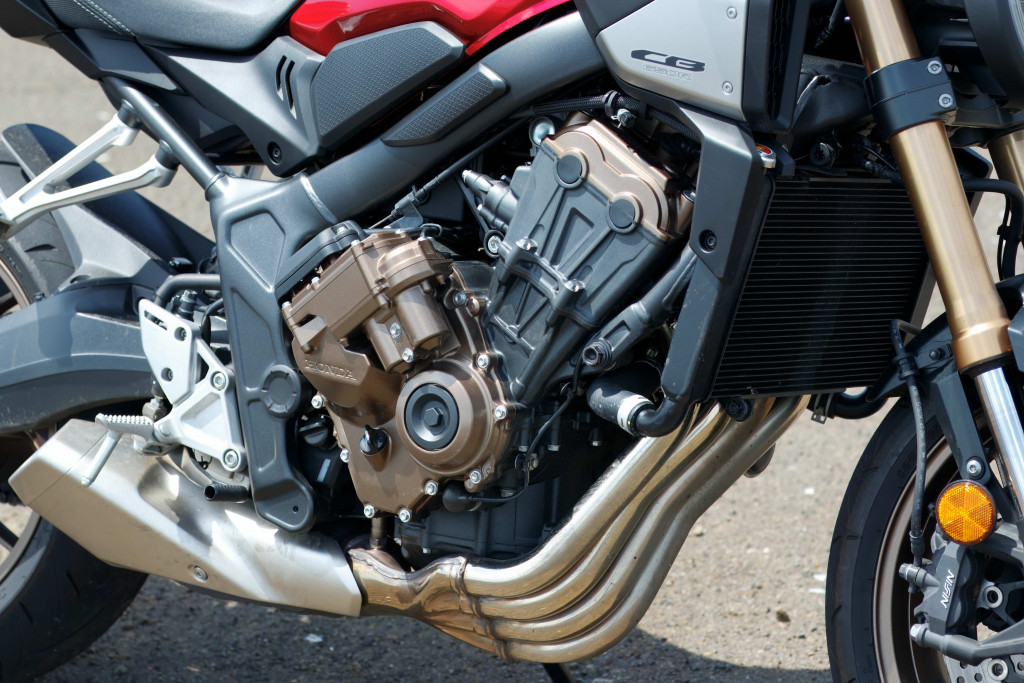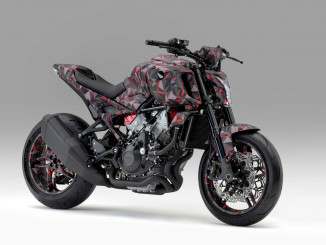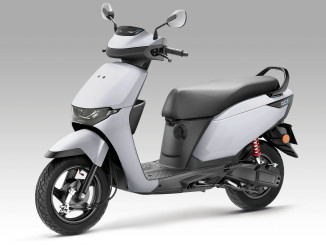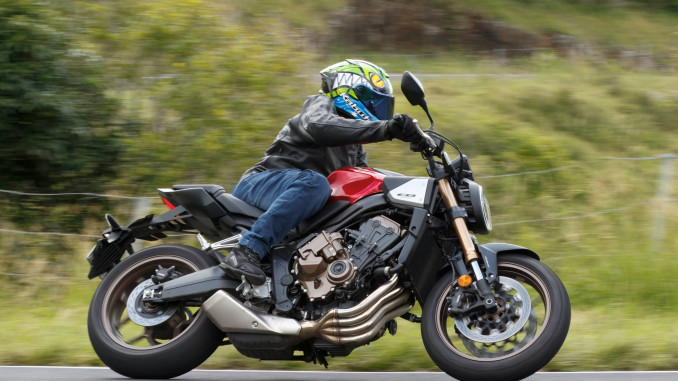
The Honda CB650R E-Clutch makes mastering a manual gearbox easier than ever… but this LAMS bike is about much more than just learning how to ride.
Honda has long had a knack for innovation and with the CB650R E-Clutch, it has brought something intriguing to the LAMS category. For riders who crave the sound and feel of an inline-four but are still bound by learner restrictions, this bike offers an experience that’s smooth, refined and surprisingly engaging. Add to that Honda’s all-new E-Clutch system, and you’ve got a motorcycle that promises to make riding almost effortless – especially in city traffic. But does it live up to the hype? Let’s find out.
THE E-CLUTCH EXPERIENCE
The biggest talking point of this bike is, of course, the E-Clutch. Unlike a traditional quickshifter, this system completely eliminates the need for a clutch lever – though it still gives you the option to use it if you prefer. At first, it feels downright bizarre to come to a stop without pulling in the clutch lever, but once you get used to it, the convenience factor is undeniable.
In stop-start and slow-speed situations like pulling up at traffic lights, or negotiating roundabouts and U-turns, the system works incredibly well, but you do need to be mindful of your throttle inputs as overly abrupt movements can lead to jerky clutch engagement. The remedy? A bit of trail braking helps smooth things out when manoeuvring at low speeds.
On the move, the upshifts and downshifts are impressively smooth, with the gearbox offering a satisfying mechanical feel. However, I did manage to hit neutral a couple of times when upshifting from first to second without using the clutch lever, so it’s important to be firm with your boot when doing so. The E-Clutch has adjustable settings for upshift and downshift responsiveness (hard, medium and soft), but even toggling between the hard and and soft settings, I found the differences to be quite subtle.
If you don’t want to rely on the E-Clutch system, simply use the clutch lever and the CB650R will act just like any other bike with a clutch lever, and then if you want the E-Clutch system to re-engage, just shift without using the lever, or pull up to a standstill without using the lever. Alternatively, you can switch the E-Clutch system off altogether.
One of the best things about the E-Clutch system is the fact there’s no need for clutch modulation when you want to make a quick getaway at the lights; simply twist and go and the E-Clutch does it all for you.
ENGINE PERFORMANCE
The 649cc inline-four revs freely and smoothly, with a linear power delivery that’s friendly for newer riders. However, there’s no mistaking this for a full-power middleweight – this is a LAMS bike, and it feels quite restricted at the top end. That being said, the bottom-end torque is reasonable and the midrange is where it’s at. Sure, you can rev it to the 12,500rpm redline if you wish, but to get the best out of the engine, you’re better off upshifting at around the 6000-7000rpm. For those who need a reminder, the bright gearshift indicator light is easily adjustable.
For the record, in its LAMS format, peak power is restricted to 35kW (48hp) and peak torque is 49Nm; some overseas markets get an unrestricted “full-power” version of the CB650R which makes a claimed 69.7kW (93hp) at 12,000rpm and 63.3Nm at 9500rpm, and we reckon that would make the CB650R an entirely different beast to ride.
Nevertheless, for those who love the classic sound of an inline-four, even the LAMS-spec CB650R delivers in spades. The four headers curling out from the front of the engine are a visual treat, and while the stock exhaust is muted, an aftermarket system would undoubtedly bring out a more aggressive soundtrack.
HANDLING, SUSPENSION AND BRAKES
The CB650R E-Clutch tips the scales with a 206kg kerb weight, which is just 3kg more than the non-E-Clutch variant, and although far from the lightest bike in the midsize segment, it feels light and flickable on the road, while the steering is quick and the bike holds a line well through corners. The suspension is on the firm side, but it offers good control. The non-adjustable Showa USD fork feels well-tuned for most road conditions, while the preload-adjustable rear shock does a decent job of soaking up big bumps. Yes, it’s firm, but overall the CB650R provides a compliant and composed ride.
The Dunlop Roadsport tyres offer excellent on-road grip that inspires confidence in both dry and wet conditions. The ABS is well calibrated and doesn’t feel intrusive, while the traction control rarely intervenes due to the bike’s modest power output. There is an easy-access ’T’ button on the left-side switchblock to toggle the TC on or off, with the default setting being on whenever the engine is restarted.
Despite some of the longest hero knobs you’ll ever see on a set of footpegs, there is still plenty of ground clearance and I never managed to scrape them while riding. Just as it is in an urban environment, the CB650R is good fun on the open road and through the twisty stuff.
Honda has equipped the CB650R with radial-mounted Nissin calipers, and they perform admirably. The front brake, in particular, offers plenty of stopping power, with good feel at the adjustable lever. The rear brake is strong too and, as mentioned, it sees plenty of use for trail braking to smooth out low-speed manoeuvres.
While the clutch lever isn’t adjustable, that’s no big omission as you never really have to use it anyway thanks to the E-Clutch system.
ERGONOMICS AND COMFORT
Swing a leg over the CB650R and you’re immediately greeted by a comfortable, upright riding position. The handlebar is reasonably wide, giving excellent leverage for quick changes of direction, and while the ’peg positioning is high, it doesn’t feel cramped. The riding triangle really strikes a good balance between comfort and control.
The seat itself is well padded and accommodates long rides without much discomfort. Even the pillion seat, while slightly higher than the rider’s, is relatively spacious… but there are no grab handles for a pillion, making it a bit of a challenge for two-up riding. Sure, this is a LAMS bike, so most riders will be running solo, but the lack of grab points also presents a challenge when it comes to securing luggage.
ELECTRONICS AND FEATURES
The CB650R’s TFT display is bright, with easy-to-read speedo and tacho, though some other information such as the fuel gauge and tripmeters are small and harder to decipher. Maybe the eyes of the 17- to 18-year-olds this bike is marketed at will have an easier time reading the small print…
Despite some info being hard to read, navigating the display is intuitive, with a left-hand switch cluster that includes a joystick-like control for scrolling through menus. Bluetooth connectivity is present for those who want to pair a phone, and there’s basic service information available at a glance.
There’s also the aforementioned adjustable shift light, which can be set anywhere between 4000rpm and 12,500rpm, allowing riders to customise shift points based on preference, and it’s quite easy to adjust the upshift and downshift responsiveness, not that it makes a huge difference.
PRACTICALITY AND BUILD QUALITY
With an average fuel consumption of 5.1L/100km on test, the CB650R should manage around 250km from its 15.4L tank before the low-fuel warning light comes on, and you should be able to get close to 300km out of it between refills. That’s decent enough for a middleweight bike aimed at city commuting and weekend rides.
Under the pillion seat, there’s just enough room to store a small set of wet-weather gear, along with the supplied toolkit and owner’s manual.
The built-in-Thailand CB650R exudes quality. The fuel tank boasts a deep, lustrous finish, while the engine cases and swingarm look just as premium as Honda’s more expensive models. The stubby exhaust is neatly integrated into the design, keeping things compact and stylish.
Styling-wise, the CB650R has a unique aesthetic; the funky looking headlight is complemented by air intakes on either side, giving it an aggressive front-end appearance. The four-header pipes are the biggest statement piece, setting it apart from the sea of parallel twins in the LAMS category.
The E-Clutch system does add a couple of inches to the bike’s width on the right side, but it’s barely noticeable when riding and doesn’t affect ergonomics or styling.
FINAL VERDICT
The CB650R E-Clutch is ideally suited to riders who want a unique, learner-legal machine that stands out from the crowd. Its inline-four engine offers a smooth and refined riding experience, the E-Clutch system makes traffic and stop-start riding effortless, and the handling is both nimble and confidence-inspiring.
For those who prefer a more traditional clutch experience, the standard CB650R model is still available, but the E-Clutch model adds an extra layer of convenience that’s hard to ignore. Whether you’re a city commuter or an aspiring weekend warrior, this bike offers a compelling blend of innovation, style and practicality. If only there was a full-power version offered in Oz…
Would I recommend it? Absolutely, especially for riders who appreciate the smoothness of an inline-four and want something a little different from the LAMS norm.
PHOTOS: SEAN MOONEY AND DEAN MELLOR
SPECIFICATIONS HONDA CB650R E-CLUTCH
ENGINE
Type: Liquid-cooled inline four, DOHC, four valves per cylinder
Capacity: 649cc
Bore x stroke: 67.0 x 46mm
Compression ratio: 11.6:1
Engine management: EFI
PERFORMANCE
Claimed maximum power: 35kW (48hp)
Claimed maximum torque: 49Nm
Fuel Consumption: 5.1L/100km (measured)
TRANSMISSION
Type: Constant-mesh 6-speed gearbox
Final drive: Chain
Clutch: Wet, multi-plate, electronic actuation
CHASSIS AND RUNNING GEAR
Chassis: Steel diamond frame
Front suspension: Showa 41mm USD fork, 120mm of travel
Rear suspension: Double-sided swing arm with monoshock, preload adjustable, 125mm travel
Front brakes: Two 310mm ventilated discs, 4-piston radial-mount caliper, ABS
Rear brake: Single 240mm disc, single-piston caliper, ABS
Front tyre: Dunlop Sportmax Roadsport 2, 120/70ZR17 R
Rear tyre:: Dunlop Sportmax Roadsport 2, 180/55ZR17
DIMENSIONS AND CAPACITIES
Rake: 25.5°
Trail: 101mm
Claimed kerb weight: 206kg
Seat height: 810mm
Wheelbase: 1450mm
Fuel capacity: 15.4L
ELECTRONICS, RIDER AIDS & CONVENIENCE FEATURES
ABS; HSTC (traction control); HISS (Honda Ignition Security System); five-inch full-colour TFT screen with Honda RoadSync for phone connection, turn-by-turn navigation and music streaming; digital speedo, digital tacho, dual trip metres, fuel gauge, distance to empty, gear position indicator, upshift indicator and clock; ESS (Emergency Stop Signal); LED headlight
ETCETERA
Price: $14,300 ride away (depending on location)
Colours: Candy Chromosphere Red (as tested), Matte Gunpowder Black Metallic
Testbike supplied by: Honda Australia
Service intervals: 10,000km/12 months
Warranty: 2 years
URL: https://motorcycles.honda.com.au/models/onroad/street/cb650r

